
Prof. Roland W. Fleming, PhD
Kurt Koffka Professor of Experimental Psychology
Giessen University
Department of Psychology
Otto-Behaghel-Str. 10
35394 Giessen (Germany)
- Phone:
- +49(0)641 / 99-26140
- Fax:
- +49(0)641 / 99-26119
- E-Mail:
- roland.w.fleming@psychol.uni-giessen.de
- Office:
- Building F2, Room 351
Research Interests
Visual Perception of Objects and Materials
Research in my lab focusses on how we visually infer the physical properties of surfaces, materials and objects in our surroundings.
When we look at things, we don't experience the world as a meaningless jumble of lines, colours or motions. Instead, whenever we open our eyes, we immediately gain access to a richly detailed world of meaningful visual sensations. We recognise objects; perceive what things are made of; identify risk and pleasures and can even work out how objects might respond to forces or actions. Based on how things look, we are able to make a remarkable range of subtle judgements about the physical properties of objects, such as whether food is fresh or stale or whether an object is stable or likely to topple over. Without touching an object, we can usually work out what it would feel like were we to reach out and touch it, based on the curves and contours of its shape and the way light plays across its surface. My research program aims to understand how the brain estimates the 3D shape and physical properties of objects and materials, and the impacts this has on perception, the imagination and action. In order to do this, we use a combination of computer graphics, image analysis techniques, neural modelling, behavioural experiments and brain imaging.
Bio
Roland Fleming
Roland Fleming is the Executive Vice Director of the Center For Mind, Brain and Behaviour (CMMB) of the Universities of Marburg, Giessen and TU Darmstadt, and Director of the Excellence Cluster The Adaptive Mind.
He is an interdisciplinary researcher specializing in the visual perception of objects and materials. He did his undergraduate degree in Psychology, Philosophy and Physiology at Oxford University, graduating with First Class Honours in 1999, and completed his PhD in the Department of Brain and Cognitive Sciences at MIT in 2004. He then served as a project leader at the Max Planck Institute for Biological Cybernetics in Tübingen. In 2010 he joined Giessen University as a junior professor. Since 2016, has been the Kurt Koffka Professor of Experimental Psychology.
His research combines psychophysics, neural modelling, computer graphics and image analysis to understand how the brain estimates the physical properties of objects. He has conducted a wide variety of studies on the perception of material properties such as glossiness, translucency, and viscosity and has applied insights from this work to the development of computer graphics algorithms for simulating material appearances. Roland Fleming has served as joint Editor-In-Chief of ACM Transactions on Applied Perception, an interdisciplinary journal dedicated to using perception to advance computer graphics and other fields. He has also been an action editor for other journals including Journal of Vision, and PLOS Computational Biology.
In 2012 he was awarded the Faculty Research Prize from the University of Giessen and in 2013 he was awarded the Young Investigator Award by the Vision Sciences Society. In 2016 was awarded an ERC Consolidator Grant for the project “SHAPE: On the perception of growth, form and process” and in 2023 was awarded an ERC Advanced Grant for the project “STUFF: Visual Perception of Materials and their Properties”. In 2022, he was elected Fellow of the Royal Society of Biology.
For more information see the Wikipedia entry on Roland Fleming.
Join the Fleming lab!
I really appreciate contact from talented folks who are passionate about the research we're doing and want to join the lab and get involved. Feel free to get in touch if you are interested in joining us! We offer a warm, welcoming, diverse, and scientifically rigorous interdisciplinary environment for nurturing top talent.
At the same time, I also get a LOT of unsolicited requests. Many of these are out of scope—generic applications from people who wouldn't really fit what we are doing. If you are serious about getting a PhD or postdoc position in my lab, here are a few important tips:
- Please don't spam me in the context of a 'spray and pray' flood of applications. If you are applying to more than a handful of other labs in addition to mine, I'm probably not interested. (Hint: it might be worth ask yourself why you are applying to so many positions. What exactly is the plan?)
- Please contact me at least 6 months before your desired start date. A year is better. It's not possible to magic up a position for you next week. It takes a lot of time. So please contact me early on, as soon as you are thinking about your next steps. I'm excited to hear from you, so we can get talking about what projects we could do.
- Be specific about why you want to join my lab. Avoid generic language like 'aligns with your research interests'. Explain the connection. Demonstrate that you actually know what we are doing and how your previous work is relevant.
- Don't use AI to write your application. It's lazy. And a sign of incompetence. I want to work with original thinkers, articulate, creative scientists who are driven by a deep curiosity about how the mind works ... not people who can't even write an email without the help of an LLM.
- If you secure your own funding it is WAY easier!
Got skills? Passion? Bring good vibes? If so, I'm looking forward to hearing from you!
Keywords
psychology | cognitive science | computational neuroscience | sensory, perceptual and motor processes | human visual perception | mid-level vision | material perception | surface perception | object perception | optical properties of materials | mechanical properties of materials | binocular stereopsis | motion | colour | shading | texture | contours | perceptual organization | grouping | transparency | translucency | gloss | sub-surface scattering | shape-from-x | intrinsic image analysis | categorization | one-shot learning | generative models | computer graphics | BRDF | photorealism | image-based editing | physics simulation | HDR images | tonemapping | perceptually-inspired computer graphics | motor-control | grasping | precision grip | multidigit grasping | psychophysics | behavioural experiments | motion tracking | computational modelling | machine learning | deep learning | deep neural networks | unsupervised learning | self-supervised learning | fMRI.
Selected Publications
-
Orientation fields predict perception of 3D shape from shading
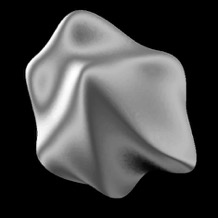
- Aubuchon*, Vergne*, Cholewiak, Kunsberg, Holtmann-Rice, Zucker & Fleming
- Journal:
- PNAS
- Summary:
- By analysing millions of pixels in renderings of shaded objects, we discovered a striking statistical relationship between image orientations and 3D surface curvature properties. A model based on this observation correctly predicts some key illusions in 3D shape perception.
- Citation:
- Aubuchon C, Vergne R, Cholewiak SA, Kunsberg B, Holtmann-Rice D, Zucker, SW & RW Fleming (2025). Orientation fields predict perception of 3D shape from shading, PNAS. 122(28)e2503088122. https://www.pnas.org/doi/10.1073/pnas.2503088122
- Data
- Download data & code
-
Core dimensions of human material perception
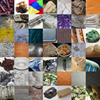
- Schmidt, Hebart, Schmid and Fleming
- Journal:
- Proceedings of the National Academy of Sciences
- Summary:
- We use a large-scale data-driven approach to uncover the core latent dimensions in our mental representation of materials.
- Citation:
- Schmidt, F., Hebart, M. N., Schmid, A. C., & Fleming, R. W. (2025). Core dimensions of human material perception. Proceedings of the National Academy of Sciences, 122(10), e2417202122.
- Stimuli
- Stimuli
- Data
- Data
-
Estimation of Contact Regions Between Hands and Objects During Human Multi-Digit Grasping
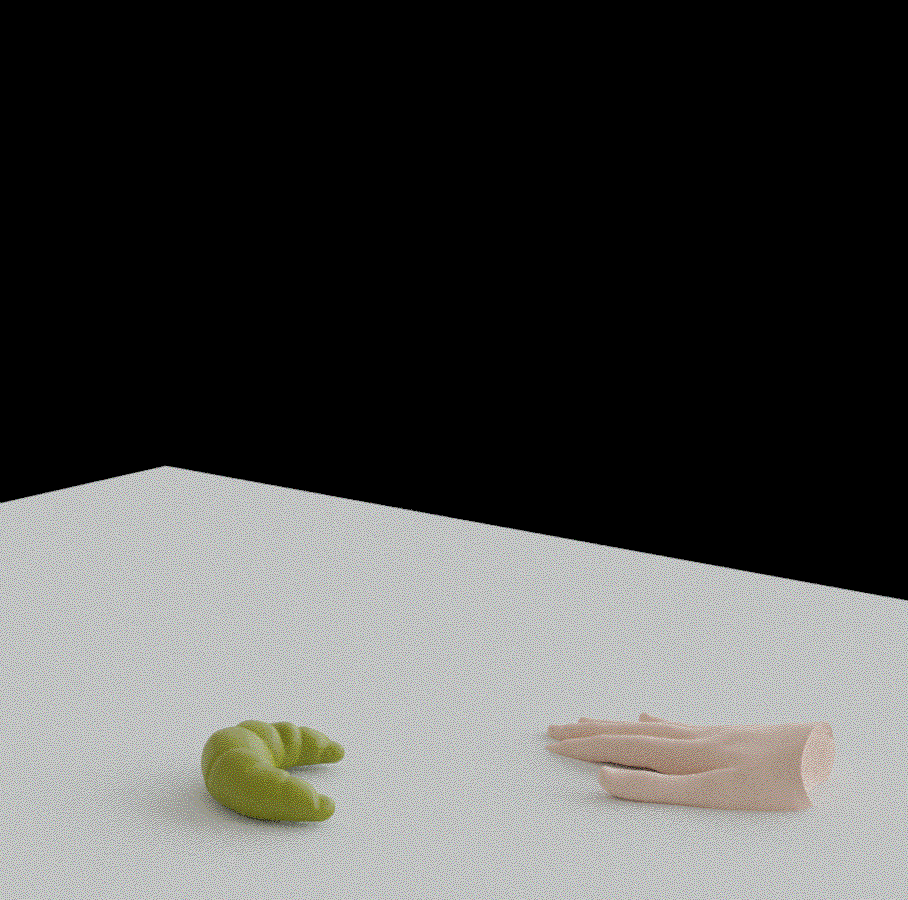
- Hartmann, Maiello, Rothkopf & Fleming
- Journal:
- Jove
- Summary:
- We demonstrate a workflow for estimating full contact regions between the human hand and objects as participants grasp them naturally, by measuring intersections between a mesh reconstruction of the hand and a virtual mesh of the object.
- Citation:
- Hartmann, F., Maiello, G., Rothkopf, C. A., Fleming, R. W. Estimation of Contact Regions Between Hands and Objects During Human Multi-Digit Grasping. J. Vis. Exp. (194), e64877, https://doi.org/10.3791/64877
- Ressources
- Download data & code
-
Mental object rotation based on two-dimensional visual representations
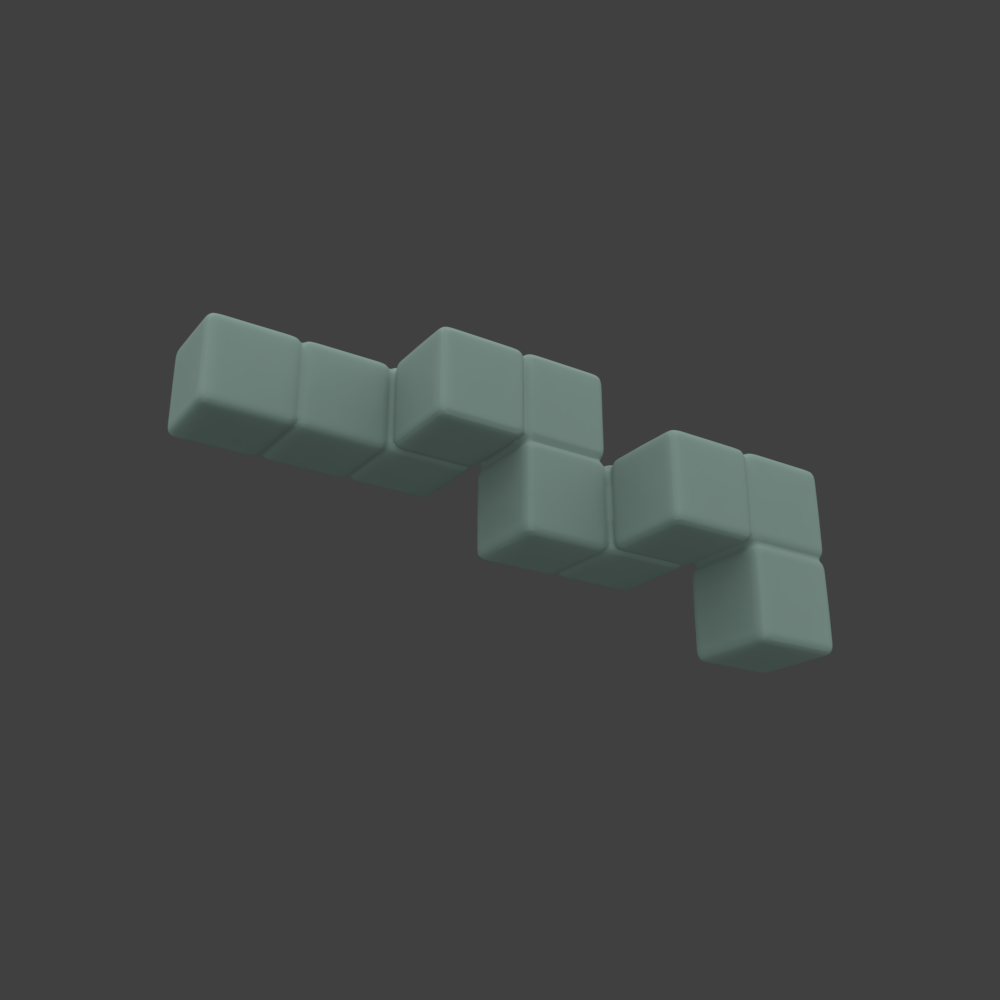
- Stewart, Hartmann, Morgenstern, Storrs, Maiello and Fleming
- Journal:
- Current Biology
- Summary:
- Mental comparisons of 3D object viewpoints have been assumed to occur on 3D representations. We show that non-uniformities in object viewpoint comparisons are captured by a 2D model, suggesting that such computations rely on a ‘mental rendering’ of the simulated proximal viewpoint transformation.
- Citation:
- Stewart, E.E.M., Hartmann, F.T., Morgenstern, Y., Storrs, K.R., Maiello, G., and Fleming, R.W. (in press). Mental object rotation based on two-dimensional visual representations, Current Biology.
- Ressources
- Data
-
One shot generalization in humans revealed through a drawing task
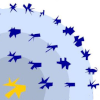
- Tiedemann, Morgenstern, Schmidt & Fleming
- Journal:
- eLife
- Summary:
- We analyze how humans are able to create a whole category of objects inspired by justa single exemplar object. We found that observers alter the part-structure of the exemplar in systematic ways, with certain parts beeing deemed as more important than others, to create a novel member of that category.
- Citation:
- Tiedemann, H., Morgenstern, Y., Schmidt, F. & Fleming, R. W. (2022). One shot generalization in humans revealed through a drawing task. eLife, doi:https://doi.org/10.7554/eLife.75485
- Ressources
- Data
-
Unsupervised learning predicts human perception and misperception of gloss.
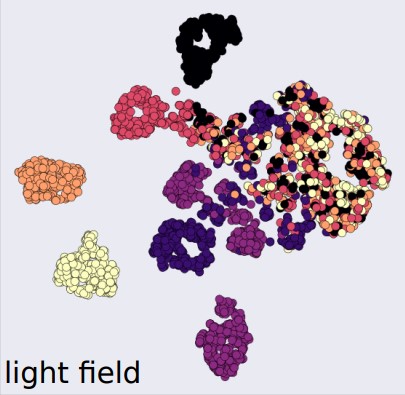
- Storrs, Anderson & Fleming
- Journal:
- Nature Human Behavior
- Summary:
- We find that unsupervised neural networks trained to compress and predict images of surfaces spontaneously learn to organize images by their gloss, lighting and other world factors. The networks correctly predict both successes and striking failures of human gloss constancy, where other models fail.
- Citation:
- Storrs, KR, Anderson, BL & RW Fleming (2021). Unsupervised learning predicts human perception and misperception of gloss. Nature Human Behavior https://doi.org/10.1038/s41562-021-01097-6
- Ressources
- Data
-
The Veiled Virgin illustrates visual segmentation of shape by cause.
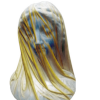
- Phillips & Fleming
- Journal:
- Proceedings of the National Academy of Sciences
- Summary:
- Inspired by a famous statue depicting the Virgin Mary wearing a transparent veil, we investigated how observers visually segment 3D shapes into multiple 'causal layers'.
- Citation:
- Phillips F* & RW Fleming* (2020). The Veiled Virgin illustrates visual segmentation of shape by cause. Proceedings of the National Academy of Sciences 201917565; DOI: 10.1073/pnas.1917565117
- Ressources
- Data
-
Learning to See Stuff
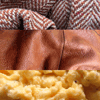
- Fleming & Storrs
- Journal:
- Current Opinion in Behavioral Sciences
- Summary:
- An introduction to unsupervised deep learning approaches to vision, which advocates for such 'statistical appearance models' as being more appropriate ways to think about material perception than classic 'inverse optics' frameworks.
- Citation:
- Fleming RW & KR Storrs (2019) Learning to See Stuff. Current Opinion in Behavioral Sciences. 30: 100–108. https://doi.org/10.1016/j.cobeha.2019.07.004
-
Visual Features in the Perception of Liquids
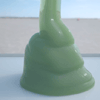
- Van Assen, Barla, Fleming
- Journal:
- Current Biology
- Summary:
- Here, using state-of-the-art fluid simulations, we investigate the cues underlying the perception of liquid viscosity. We suggest that midlevel visual features describing a liquids shape and motion play a key role in viscosity perception Citation:
- Citation:
- Van Assen, JJ, Barla P & Fleming, RW (2018). Visual Features in the Perception of Liquids. Current Biology 28(3), 452–458. https://doi.org/10.1016/j.cub.2017.12.037
- Ressources
- Data
-
Material Perception
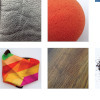
- Fleming
- Journal:
- Annual Reviews of Vision Science
- Summary:
- This paper reviews recent work on material perception and scrutinizes some basic assumptions of mid-level vision to propose an alternative approach to how material properties might be estimated and represented.
- Citation:
- Fleming RW (2017). Material Perception. Annual Reviews of Vision Science 3(1). 365-388. doi: 10.1146/annurev-vision-102016-061429
-
Flow-Guided Warping for Image-Based Shape Manipulation
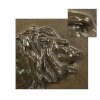
- Vergne, Barla, Bonneau, Fleming
- Journal:
- ACM Transactions on Graphics
- Summary:
- We present an interactive method that manipulates perceived object shape using a spatial warping technique to exaggerate orientation patterns in the image that are strongly correlated to surface curvature. Our algorithm produces convincing shape manipulation results on synthetic images and photographs, for various materials and lighting environments.
- Citation:
- Vergne, R., Barla P., Bonneau, G.-P. and R. W. Fleming (2016). Flow-Guided Warping for Image-Based Shape Manipulation. ACM Transactions on Graphics (Proceedings of SIGGRAPH 2016), 35(4): 93. DOI: http://dx.doi.org/10.1145/2897824.2925937.
-
'Proto-rivalry': how the binocular brain identifies gloss
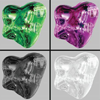
- Muryy, Fleming, Welchman
- Journal:
- Proceedings of the Royal Society of London
- Summary:
- Here, we show that the brain exploits some surprisingly simple binocular fusion signals to identify glossy surfaces. We show that the widely held concept of 'binocular luster' is wrong. Instead it is the partial fusion that occurs when binocular matches stray from epipolar geometry that drives binocular gloss perception.
- Citation:
- Muryy, A.A., R.W. Fleming and A.E. Welchman (2016). 'Proto-rivalry': how the binocular brain identifies gloss. Proceedings of the Royal Society of London (B), 283: 20160383. doi: 10.1098/rspb.2016.0383
-
Visual Perception of Materials and their Properties
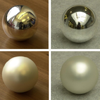
- Fleming
- Journal:
- Vision Research
- Summary:
- Here we review the perception of materials and propose that the visual system uses generative statisical models of material appearance to represent and distinguish between different materials.
- Citation:
- Fleming, R.W. (2014). Visual Perception of Materials and their Properties. Vision Research, 94, 62-75 https://doi.org/10.1016/j.visres.2013.11.004
-
Specular reflections and the estimation of shape from binocular disparity
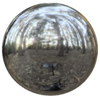
- Muryy, Welchman, Blake, Fleming
- Journal:
- Proceedings of the National Academy of Sciences
- Summary:
- We studied binocular 3D shape perception for ideal mirrored surfaces, finding that far from 'knowing the physics' of specular reflection, they make substantial errors. The responses are consistent with a process that identifies reliable local disparity signals and interpolates between them.
- Citation:
- Muryy, A., Welchman, A.E., Blake, A. and R.W. Fleming (2013). Specular reflections and the estimation of shape from binocular disparity. Proceedings of the National Academy of Sciences, 110(6): 2413-2418. https://doi.org/10.1073/pnas.1212417110
-
Estimation of 3D shape from image orientations
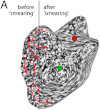
- Fleming, Holtmann-Rice, Bülthoff
- Journal:
- Proceedings of the National Academy of Sciences
- Summary:
- Here we show that the perception of 3D shape from surface texture patterns is based primarily on specific 2D orientation signals. Perceptually adapting orientation detectors causes unoriented random noise to look like specific 3D shapes, leading to striking illusions.
- Citation:
- Fleming, R. W., Holtmann-Rice, D. and H. H. Bülthoff (2011). Estimation of 3D shape from image orientations. Proceedings of the National Academy of Sciences, 108(51) 20438-20443. https://doi.org/10.1073/pnas.1114619109
-
Visual Motion and the Perception of Surface Material

- Doerschner, Fleming, Yilmaz, Schrater, Hartung, Kersten
- Journal:
- Current Biology
- Summary:
- In this paper we show the central role that optical flow plays in the perception of surface glossiness. We show that sticking reflections onto a surface makes it look matte, and identify specific optic flow characteristics that can predict surface material illusions.
- Citation:
- Doerschner, K. Fleming, R.W., Yilmaz, O., Schrater, P.R., Hartung, B. and Kersten, D. (2011). Visual Motion and the Perception of Surface Material. Current Biology, 21(23): 1-7. https://doi.org/10.1016/j.cub.2011.10.036
- Ressources
- Data
